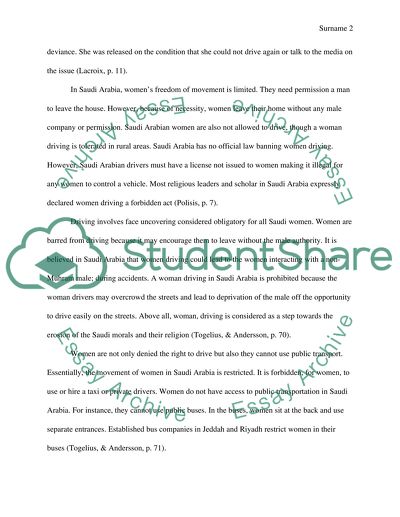Cite this document
(“Saudi woman's right to drive Research Paper Example | Topics and Well Written Essays - 1500 words”, n.d.)
Retrieved from https://studentshare.org/english/1598697-saudi-womans-right-to-drive
Retrieved from https://studentshare.org/english/1598697-saudi-womans-right-to-drive
(Saudi woman'S Right to Drive Research Paper Example | Topics and Well Written Essays - 1500 Words)
https://studentshare.org/english/1598697-saudi-womans-right-to-drive.
https://studentshare.org/english/1598697-saudi-womans-right-to-drive.
“Saudi woman'S Right to Drive Research Paper Example | Topics and Well Written Essays - 1500 Words”, n.d. https://studentshare.org/english/1598697-saudi-womans-right-to-drive.


